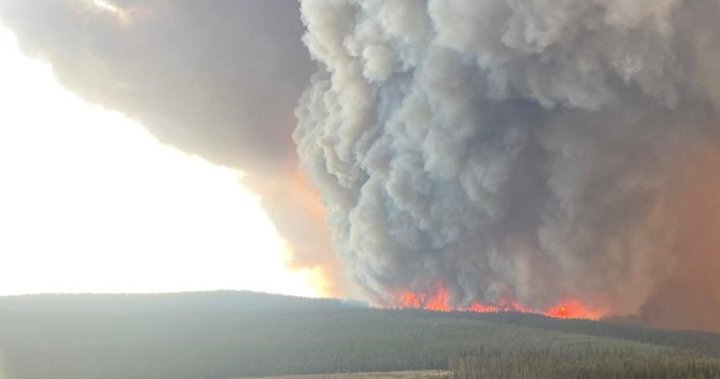Paragraph 1: Introduction to the Growing Threat of Severe Wildfires in Canadian Forests
Canadian forests face an increasing threat of severe wildfires, exacerbated by the impacts of climate change. A recent study published in the journal Science reveals a significant upward trend in the number of days conducive to high-severity fires, highlighting the urgent need for proactive mitigation measures. The study, conducted by Canadian researchers, analyzed fire severity data spanning four decades, from 1981 to 2020. Their findings underscore a worrying escalation in fire risk, particularly in northern regions of the country.
Paragraph 2: Key Findings of the Study and Implications for Fire Management
The study reveals a disturbing increase in the number of days favorable for high-severity fires. Researchers found an average of two additional days per year conducive to such fires in the period from 2000 to 2020 compared to the preceding two decades. While two days might appear insignificant, the devastating wildfire that ravaged Jasper, Alberta, in the summer vividly illustrates the potential for rapid escalation. The fire expanded to a staggering 60 square kilometers within mere hours, underscoring the dangerous implications of even a slight increase in high-risk days. This reinforces the need for enhanced preparedness and responsive fire management strategies.
Paragraph 3: The Role of Dry Fuel and Weather Conditions in Fire Severity
The study identifies dry fuel, consisting of twigs, leaves, and other readily combustible materials, as the primary environmental driver of fire severity. While weather conditions, including hot, dry, and windy periods, also play a significant role, their influence is more pronounced in northern regions. This highlights the varying factors contributing to fire risk across different geographical areas. Understanding these nuances is crucial for developing targeted mitigation strategies. The accumulation of dry fuel creates a tinderbox effect, increasing the likelihood of rapid fire spread and intensification.
Paragraph 4: Regional Variations in Increased Burn Severity Days
The study reveals significant regional variations in the increase of burn severity days. The most substantial increases were observed in two key areas: northern Quebec and a region encompassing the Northwest Territories, northwest Alberta, and northeast British Columbia. These areas experienced the most dramatic rise in the number of days with conditions ripe for high-severity fires, emphasizing the need for regionally specific fire management strategies. The concentration of increases in these areas suggests particular vulnerability to climate change impacts and warrants focused attention from researchers and policymakers.
Paragraph 5: The Urgent Need for Proactive Mitigation and Adaptation Strategies
The study’s findings underscore the urgent need for proactive mitigation and adaptation strategies to address the growing threat of severe wildfires in Canada. These strategies should encompass both short-term measures, such as enhanced fire suppression capabilities and early warning systems, and long-term initiatives focused on reducing fuel loads and promoting forest resilience. Furthermore, addressing the underlying drivers of climate change remains crucial to mitigating future fire risk.
Paragraph 6: Conclusion and Call to Action
The increasing frequency and severity of wildfires pose a significant threat to Canadian forests, ecosystems, and communities. The study’s findings serve as a wake-up call, emphasizing the pressing need for proactive measures to mitigate the escalating risks. Collaborative efforts involving researchers, policymakers, and land managers are essential to develop and implement effective strategies to protect Canadian forests from the devastating impacts of wildfires. This includes investing in research to further understand the complex interplay of factors driving fire severity, promoting public awareness and education, and implementing sustainable forest management practices. A comprehensive and coordinated approach is crucial to safeguarding these valuable ecological and economic resources for future generations.

